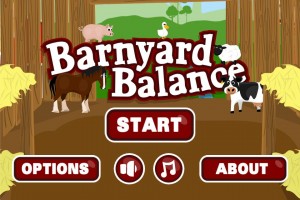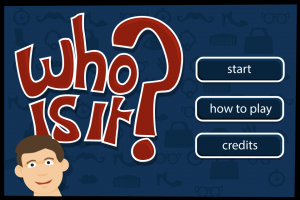Finding time to make games
As long as things go according to plan I’ll have a new game ready for the App Store within 2 weeks. Go me!
Here’s the gist of this post, if you want to save reading through my ramblings:
- Don’t be afraid to abandon a project as long as you learn from it.
- If you’re trying to make a game in your spare time, limit the amount of time you spend on it, if it looks like it’s going to take more than 2 weeks, stop and rethink.
- Choose tools that will help you get to the end quicker (eg level designing tools, physics libraries etc)
- Use your pre-existing skills as much as you can and don’t pick too many new things to learn.
I love thinking up and making games
It’s been over 14 years since I made my first online game, when I first created SheepGame I thought that I would punch out games every few weeks, and if you’d spoken to me in 1999 and asked me how many I’d have made by 2013 I’d have said something like “shit loads”. But in reality it’s only a handful.
In the year after SheepGame was launched I created 2 more games, DogGame and a shopping game for Vogue (no longer live) I also reworked the original SheepGame, which is still online to this day.
So where are all the games?
What happened to the landslide of games? Was it laziness? Was I too busy? Had I run out of ideas?
It might have been a couple of these things, but I think the thing that held me back was being overly ambitious with anything I wanted to make, then disappointing myself that I couldn’t make anything. I’d have a great idea, but the development and/or design time would take waaaay too long.
Throughout 2000 – 2011 I’d fixate on the fact that if I had an idea for something I must see it through to the end, if it was something very complex I would end up fatiguing my self and losing confidence until I abandoned the project. This would take up months of my life, and each time it would happen my confidence would go down.
Starting to finish
In 2011 I started to change my mentality, I’d set myself a new years resolution the year before to create an app for the app store but I failed to realise it. My game, Barnyard Balance should have been great, but I bit off more than I could chew and throughout 2010 I tried to finish it but I was destined to repeat what I’d done so many times before – wear myself out. What changed in 2011 was that rather than just let it peter out, I stopped and set myself some rules.
The rules of the game
1. Coming up with the idea can take as long as I like
2. The design and development must be done in 3 weeks or under
So with those rules, I managed to create Doodle Duel by mid February 2011. A very simple PhoneGap based game, that has proved quite popular since it was released.
In the year since I’ve had a million ideas for other games, but always kept the rules in my head. As a result I’ve had 2 games fairly advanced in their ideas and execution, but they have been brutally canned because of the timing rule.
So what happens when I work like this? Isn’t the effort I make on the games wasted?
Not at all, each time I fail to create a game, I learn something that can be taken into the next one. They become more like training sessions, getting me ready for the big event (the time I have an idea that is 100% fulfilled).
What I’ve learned from the failed games
Barnyard Balance
Barnyard Balance is a game where you have to keep animals off the ground by balancing them on a seesaw.
What happened: Whilst the idea seemed like fun, the screen size and controls wouldn’t quite gel together. A late move to the iPad then increased the amount of design time I needed to devote.
What I learned: Spend more time planning.
What happened? Each level in BB required a different set of things to balance, and different things to balance them on. Whilst I could define these in something like XML, I really wanted to manipulate the levels in a more visual way to get the right balance (no pun intended) in the game.
What I learned: If your game requires levels, then ensure that you have some kind of level editing tool available.
What happened? In trying to create Barnyard Balance I tried to learn way too much; Lua, Toon Boom, xCode, Corona SDK, InkScape, how to use a Mac, Git… the list could go on. Learning each of these new things takes time in itself, without having to do it in the context of a game.
What I learned: Use more of your pre-existing skills to develop your idea, and keep learning to a limited set of areas. Also, try to keep the areas you learn things that will help you in other projects.
Territory
Territory is a turn based strategy game, in the style of Tic Tac Toe.
What happened? Despite converting the game to being paper based before starting development, so I could iterate through variations of the game rules, once the game was running on the device players would end up with very similar results each time they played. Which was fun the first time around… not so fun the 4th or 5th.
What I learned: Even though the idea for a game seems good, when you play the game for real it’s very hard to find a good balance for the players. Especially if it’s for 2 or more. If you can’t get this balance right you will lose a lot of time in trying to find it.
Who is it?
Who is it? is a memory game where you see illustrations of people and learn something about them (eg their name and favourite colour). Then need to recall that information through a series of minigames.
What happened? Part of the requirement for this game, was to be able to create the faces quickly and easily. If I were to pursue building it, I would have lost a lot of time in creating UI widgets that would allow me to create this interface. The UI requirements weren’t anything too complex, they just weren’t supported by the technology I chose.
What I learned: When you choose the technology for the game, ensure that it can easily support the elements required to complete it. Even though I could spend time implementing everything I need, it would take me well over the timing rule.
What’s next?
By early February I hope to have my next game 100% finished. I’ve obeyed the rules, and at the time of writing I’m just under half way through the development and design (1 week). I’ve found software that allows me to easily edit the levels, the graphic design is clean & simple, and I’ve limited myself to only having to learn about the authoring software.
So the next time I write on my blog I’ll tell you all about it, wish me luck.

